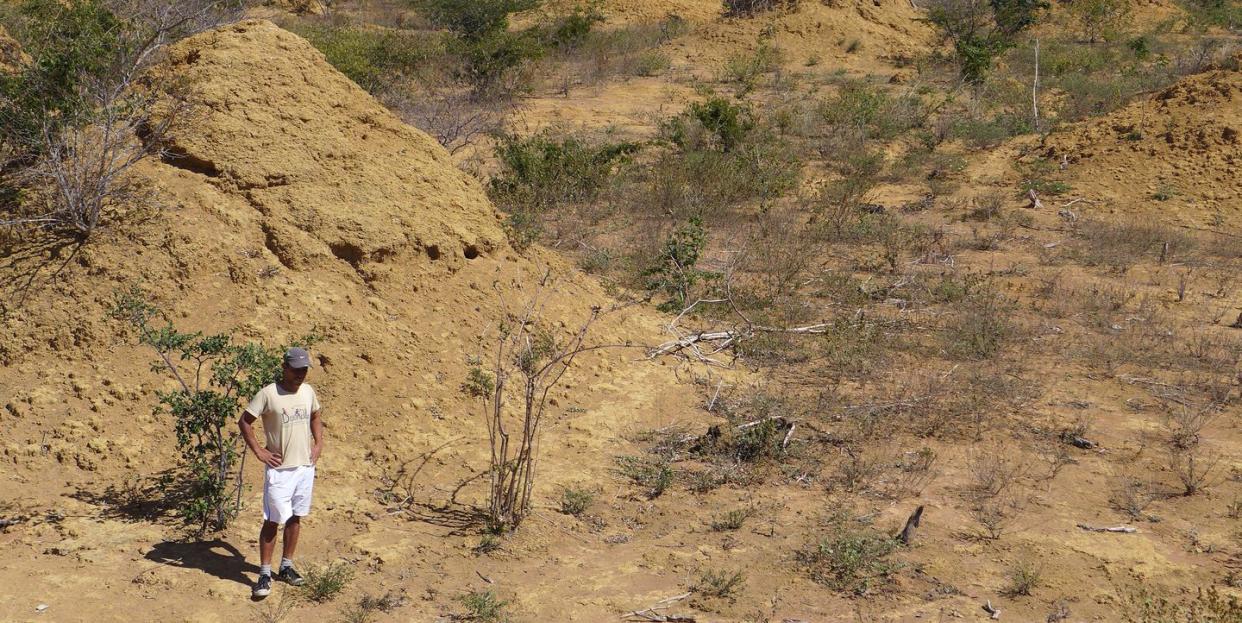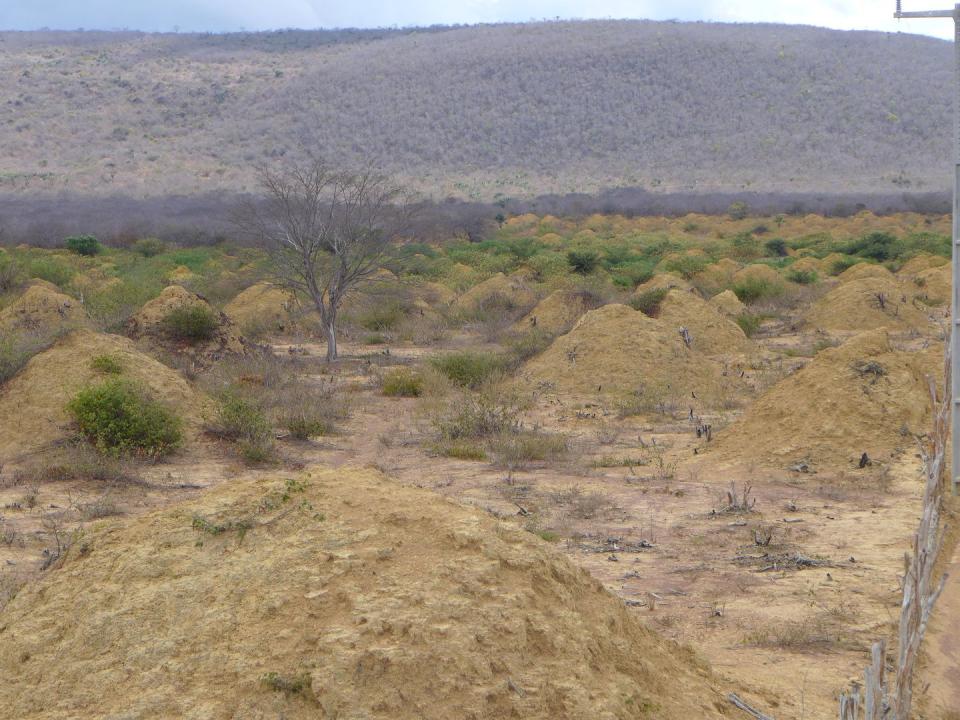A 4,000-Year-Old Complex of Termite Mounds as Big as Great Britain Somehow Went Undiscovered Until Now

Have termites constructed the 8th wonder of the world? At the very least, a recent discovery in a remote region of northeastern Brazil has biologists shaking their heads in disbelief.
When a tract of dry, thorny tropical forest was cleared to make way for pasture, a strange moonscape of single-story conical earthen mounds was revealed-200 million of them in fact, spaced at regular intervals as though manmade. Altogether, the mounds span an area as large as Great Britain, and yet somehow went undetected for 4,000 years.
What ancient civilization managed to become so well established yet remain hidden from the rest of the world for such an astounding length of time? None other than the most ubiquitous insect on earth: the termite.

Termite colonies range in size from a few hundred individuals to several million. They’ve colonized every landmass on earth except Antarctica (eat your heart out, British Empire) and their queens have the longest lifespan of any insect in the world, topping out at 50 years.
Resilient as heck, termites are also amazing architects. The 8-foot-high, 30-foot-wide mounds uncovered in Brazil are not nests, says Entomologist Stephen Martin, lead author of the new study describing the biological phenomenon. Rather, they're excavation heaps hinting at vast networks of interconnected tunnels that would put the New York City subway to shame.
The tunnels serve as defensive fortifications against predators who, like the termites, collect their food from the forest floor. They essentially build a cylindrical shield around their body as they look for food, which consists of the dead leaves of a singular kind of plant. When that harvest is complete, they wait for months for the next leaves to fall. Scientists estimate that the equivalent of 4000 Great Pyramids of Giza have been excavated by soft-bodied bugs no longer than your fingernail. Oh, and they’re blind.
Stranger still, the colonies at the site in Brazil appear to be uninhabited, abandoned thousands of years ago. Yet there they stand, as weird as an overnight crop circle and as magnificent as the Taj Mahal, the Panama Canal, and the International Space Station combined. Even Andre the Giant takes a back seat to 88,800 square miles of towering termite superdomes dubbed “the greatest known example of ecosystem engineering by a single insect species.”
('You Might Also Like',)

